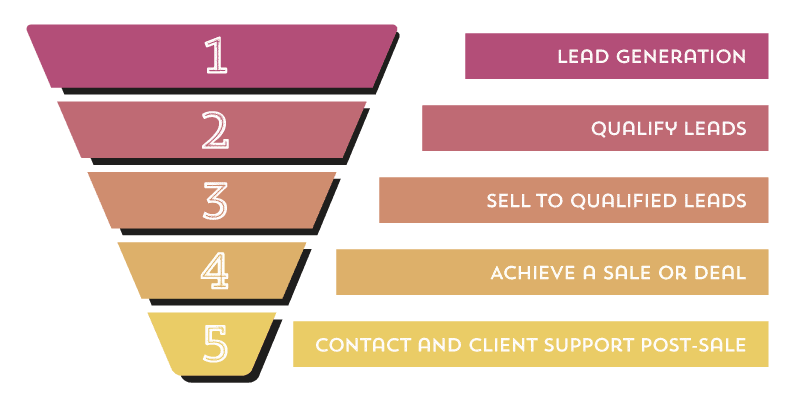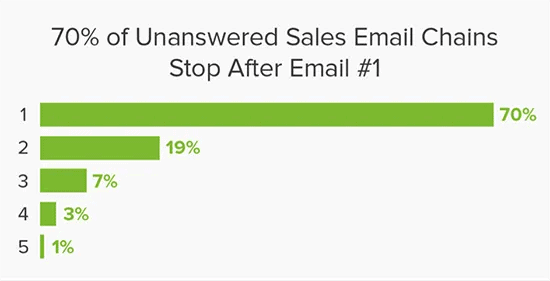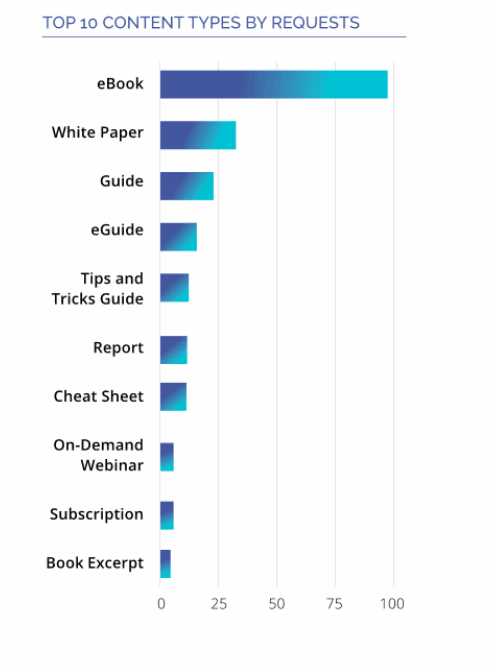It can take a long time to close deals, especially in the B2B market. Imagine if you could speed up the process, freeing up time to invest in new leads, and bring in more prospects. Luckily, you can 💪
By actively managing your pipeline, you can pinpoint the areas that slow down potential sales and work on speeding them up. Here’s how you can get started.
Define Your Pipeline
In order to improve your pipeline, you must have one in place. That means spending some time figuring out what steps feature in your sales process, and assigning leads accordingly. A simple pipeline could be:
- Lead generation
- Lead qualification
- Meetings/proposal
- Sale
- Follow-up

Image source
You should understand what stage in the pipeline each of your leads are at, and be able to shift them depending on how they respond to you. For instance, if you have a company in stage 1 (lead generation) and then they call one of your freephone numbers, you’ll want to move them straight into stage 2 (lead qualification), as they have interacted with you directly.
If you don’t move them and continue treating them as though they’re at stage 1, they might get frustrated and move on to your competitors. So, it’s important to keep track of where each lead is.
Monitor Metrics
Once you’ve got a clear pipeline in place, it’s time to start assessing how it’s working for you. You can do this by choosing key metrics to track and watching them over a couple of months. Things to watch include:
- How long does each lead spend in each stage?
- On average, how long does it take to close a sale?
- How many new leads enter the pipeline per month?
- What’s the average conversion rate?
- What percentage of leads that don’t convert drop out in each stage?
You can drill down into some of these further. For instance, you can weigh the time taken to close a sale against the size of the sale. This may lead you to find additional data, such as that sales under $25,000 take around four months, sales between $25,000 and $50,000 take around six months, and $50,000+ take a year. This is useful for deciding how to prioritize, and who to assign to certain leads.
Identify Problem Areas
With these metrics in mind, you should be able to identify any problem areas. Perhaps you have a lot of companies in the lead generation stage, but not many making it through to lead qualification.
If you’re selling a phone system for small business, but mostly targeting large companies, you won’t be getting the results you want. This could be because you’re looking in the wrong places. Maybe you get lots through into the meeting/proposal stage, but lots drop off before the actual sale? Then it might be time to adjust how you sell your services.

Image source
Once you have the problems in mind, it’s time to start implementing solutions.
Ways to Close Sales Faster with Sales Pipeline Management
Sales pipeline management is an ever-evolving process, so don’t treat these solutions as an end point. Instead, test them out, see what works, and keep reviewing. It might mean your sales team needs to do a little bit more admin work to ensure you have accurate metrics. That admin work will pay off in the long run, with quicker sales.
Find the Decision-Makers
Most businesses will have certain people responsible for making purchasing decisions, and it’s worth ensuring you know who they are. For instance, if you’re offering to provide telemedicine software local phone numbers then there’s no point in wasting your time trying to sell to HR, when it’s marketing or IT that might be in charge of the decision. Rather than getting halfway down the pipeline and having to start again, check you have the right person at the start.
Don’t Clash with Other Salespeople
Occasionally, two people in a sales team will end up following up with similar leads. Try to avoid this wherever possible. Having a single point of contact per business (or department, if it’s a very large company) makes it easier to close sales.
There’s nothing quite as frustrating for a decision-maker as being in meetings with someone about a product, only to start receiving template emails about that product from someone else. It can lead to them feeling like any personal connection made has been fake, that their problems haven’t been heard, and that they’re just another number. Not only might you lose a sale, you’ve also wasted your salespeople’s time in an easily avoidable way.
Be Willing to Drop Dead Leads
Knowing when a lead is dead is an important part of sales pipeline management. Sometimes it’s easy to tell – a company will outright state their lack of interest – but other times they’re too polite. Being able to look at your metrics and see how they compare can be helpful here. If you’ve been working on this sale for three times as long as the average time taken, it may be time to reassess if it’s worth it.
Of course, you don’t need to ghost them. Leave the relationship open for them to contact you if their situation changes, but stop spending time trying to convert them.
Know When to Follow Up
The art of the follow up is a huge part of the sales pipeline. Knowing how often to do it, what methods to use, and when is the ideal time to employ them is a huge part of closing a sale. As an example, imagine you’re talking to an up-and-coming tech company. Maybe they’re currently focusing on how to get investors for a startup and can’t commit. Following up in a week or two won’t have positive results – they’re unlikely to have achieved their aim and you may only irritate them. Instead, giving them a month or two and then checking in has an increased chance of success – especially if you personalize it by asking how their search went 🔎

Image source
Standardize Your Sales Process
Many sales teams rely on their own way of doing things, which means there’s no standardized process. This can work out, as some of your team will have years of experience and a knack for closing, but it’s far more effective to have a set process.
Sit down with your top salespeople and find out what works for them and what doesn’t. From there, formalize how things are done. Things to consider standardizing include:
- How you make your initial approach
- How frequently you follow up
- What supporting content you send out
- What key points you talk about in your pitch
Standardizing the process makes it easier to keep track of and tweak it if it’s not working. By working with your team to create the process, you can make use of their insights, while also updating it to work in the current day. New business laws (like GDPR) have impacted how old tactics like cold calling worked, so it’s worth making sure you consider this too.
Balance Small and Big Sales
Generally, big sales take longer to close. It’s worth weighing this up against how much they’re worth – you might even want to split your team accordingly. If you sell communication solutions, you could have one section dedicated to small office VoIP systems whilst another focuses on larger companies and a broader range of services.
A commonly mentioned balance is the 80/20 rule. That is that 20% of your highest value leads will bring in 80% of your revenue. Allowing some of your sales team to dedicate their efforts to this 20% has two major benefits: it frees them up to focus on these big names, and it also means the rest of the team can speed through the pipeline with lots of smaller sales.
Have Content Ready to Go
As your leads get further down the pipeline, they’re likely to want more content to engage with. Having to go away, find or create this content, and come back slows down the sales process. Instead, make sure you have any relevant content easily accessible. This is where linking your marketing and sales teams together can help. If your sales team regularly gets asked for certain things, why not get your marketing team to put it together?

Image source
You should also ensure you have general guides or articles available on your site. For instance, if you provide phone systems, have something about how VoIP is changing communication or how established telemedicine providers are using the technology. Many leads will go away and research on their own, so by having this content available on your website you make it easier for them to choose you.
Use a CRM System
All of these steps of sales pipeline management can be made easier by investing in a CRM system. This will allow your sales team to keep track of where each lead is on the pipeline, to add notes for following up, and to monitor and review important metrics.
You can also use a CRM system to automate some of the sales process, like initial contact emails or follow-ups. This automation will free up your team to spend more time on promising leads that are close to completion, rather than the early stages.
Review and Re-evaluate All Sales Pipeline Management
As I mentioned earlier, this should be an ever-evolving process. Something that worked a year ago might not do so anymore. For instance, physical demonstrations are less viable due to the pandemic, so adjusting accordingly can keep your pipeline flowing.
Regularly review your pipeline with the metrics you’re tracking and ensure it’s improving in the way you want.
Sam O’Brien is the Senior Website Optimisation & User Experience Manager for EMEA at RingCentral, a Global VoIP, video conferencing and call centre software provider. Sam has a passion for innovation and loves exploring ways to collaborate more with dispersed teams. He has written for websites such as WANSpeak and Best Company. Here is his LinkedIn.







